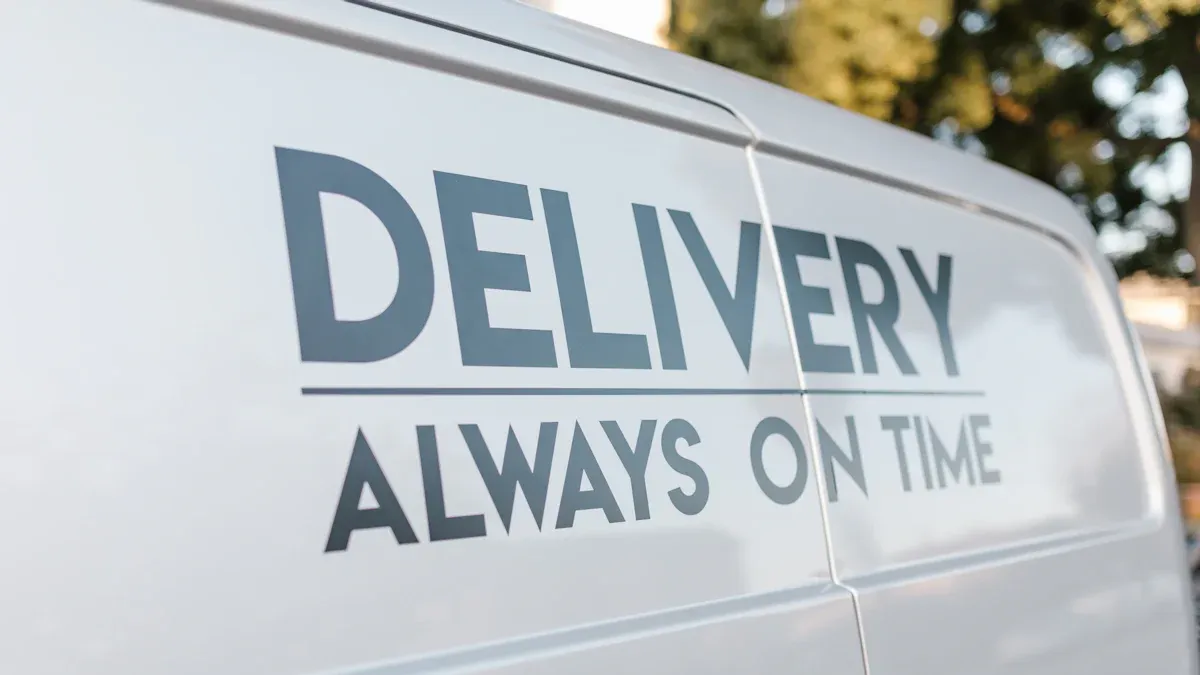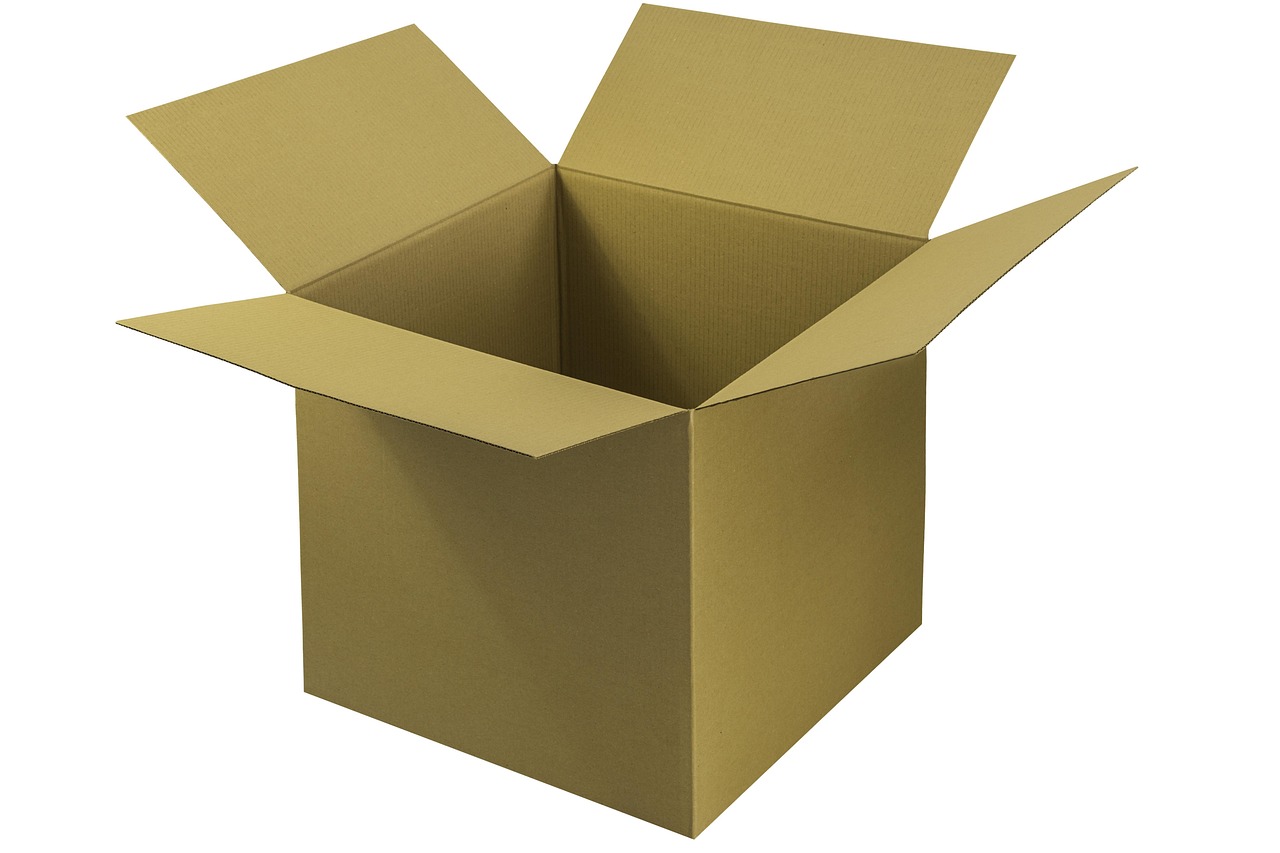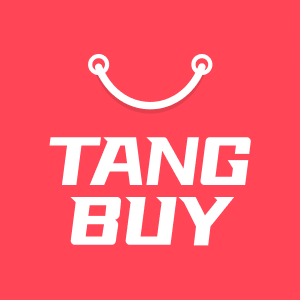How Dropshipping Solutions Deliver Speed, Savings, and Support

You want to start your online shop quickly. You also want to save money and get help when needed. A dropshipping solution helps you do all these things. Almost 27% of new online shops now use dropshipping as their main way to send orders. You do not need to buy stock first, so you avoid big risks and costs. Look at how much you can save compared to normal shops:
Cost Component | Dropshipping Cost Range | Notes |
|---|---|---|
Ecommerce Store Setup | $100 - $300 | Website design and hosting fees |
Supplier Fees | $0 - $200 | Some suppliers charge fees; some are free |
Inventory Costs | $0 | No stock needed |
Total Startup Cost | $132 - $500 | Covers basics and a bit extra |
Many business owners think dropshipping is easy to grow and not risky. Think about how this way could fit your business plans.
Key Takeaways
Dropshipping helps you open an online shop fast. You do not need to buy stock first. This lowers your risk and saves money.
You can run your shop from any place. You can focus on marketing and growing your shop. You do not need to pack or store items.
Dropshipping solutions help you set up your shop quickly. They give you automation tools and connect you to suppliers. This saves you time and effort.
You do not pay for a warehouse or hire staff. This keeps your business flexible and costs low.
Good supplier relationships and clear talks help keep products good. This also keeps customers happy.
Use automation in a smart way. It helps with orders, stock updates, and customer messages.
Pick your products with care. Test samples and set clear rules. This builds trust and lowers returns.
Good customer support is important. Learn from feedback to help your dropshipping shop grow.

Overview
What Is Dropshipping?
You may ask what dropshipping is. It lets you sell things online without keeping stock. You do not buy items until someone orders from your shop. This way is popular with many business owners for a few reasons:
You need little money to begin as you do not buy stock first.
You do not need to store products or run a warehouse.
You can work from anywhere if you have the internet.
You can try selling new products with less risk.
You spend more time on marketing and growing your shop, not packing.
Growing your business is easier as you do not need more staff or space.
A dropshipping solution helps you with these jobs, so starting is even easier.
How It Works
Let’s see how dropshipping is different from normal online shops. In a normal shop, you buy stock, keep it, and send it yourself. With dropshipping, things work in another way:
Feature | Dropshipping Model | Traditional Inventory Model |
|---|---|---|
Inventory Costs | No inventory costs; you do not need storage or big spending. | You pay for stock first and need space to keep it. |
Shipping | Supplier sends orders straight to your customer; you do not touch parcels. | You pack and send orders, so you control shipping. |
Profit Margins | Margins are lower as suppliers charge fees. | Margins can be higher since you buy in large amounts. |
Order Management | You must work with suppliers for tracking and returns. | You handle orders yourself, which can be simpler. |
Customer Service | You depend on your supplier’s rules and speed. | You control support and can reply fast. |
Risk | Less risk—no worries about unsold or damaged stock. | More risk—leftover or broken goods can cost you. |
Branding & Customisation | Limited—products often come in plain boxes. | Full control—you can use your own branding and extras. |
You can see dropshipping removes many hard parts of running a shop, but you lose some control.
Key Players
Every dropshipping business has three main people:
Retailer (You): You run the shop, pick what to sell, set prices, and talk to customers. You never touch the products.
Supplier: This is the maker, wholesaler, or distributor. They keep the stock, pack orders, and send them to your customers. They also handle returns and some support.
Customer: This is the person who buys from your shop. Most customers do not know a third party sends their order.
Tip: If you build a good link with your supplier, your dropshipping solution will work better. Talking well helps stop mistakes and keeps your customers pleased.
Dropshipping Solution Benefits
When you use a dropshipping solution, you get three main benefits. These are speed, savings, and support. Let’s see how these help you run your online shop with less worry and more success.
Speed

Fast Setup
You can open your shop much faster with a dropshipping solution. You do not need to wait for stock or set up a warehouse. Most platforms show you each step, so you can start quickly. Here is how long each part might take:
Setup Step | Estimated Time (hours) | Notes on Variability |
|---|---|---|
Initial setup and plan selection | 2 - 4 | Depends on your choices and domain purchase |
Finding and integrating supplier | 1 - 5 | Faster if you know what you want |
Adding products | 3 - 13 | Depends on research and product count |
Designing the store | 6 - 22 | More time for custom designs |
Installing Shopify apps | 1 - 5 | Varies by number of apps |
Setting up technical aspects | 2 - 5 | Depends on your experience |
Total Estimated Time | 19 - 54 | You can launch in a few days if you stay focused |
Many dropshipping solutions, like Spocket, DSers, and Zendrop, let you add products with one click. They also work easily with Shopify, WooCommerce, and other platforms. This means you can fill your shop with products in just a few hours.
Quick Order Processing
Once your shop is open, you want orders to move fast. Dropshipping solutions use automation to send orders straight to suppliers. You do not need to pack or ship anything yourself. Suppliers get order details right away and start packing quickly. Some platforms, like DSers and Spocket, even give your customers tracking numbers as soon as the order ships.
Tip: Pick suppliers with fast shipping, like US or EU warehouses, to keep your customers happy.
Savings
No Inventory Costs
You do not need to buy stock before you sell. This removes a big risk for your business. You only pay for products after your customer orders. Here is how some popular platforms compare:
Platform | Best For | Pros | Cons | Pricing Range |
|---|---|---|---|---|
Tangbuy | Fast global dropshipping with flexible MOQ | Lightning-fast processing, factory-direct pricing, wide product range, real-time tracking | Limited brand recognition compared to older platforms | Free |
Spocket | Dropshipping in USA & Europe | Vetted suppliers, competitive pricing, US/EU suppliers | Limited product options | $39.99 - $299.99/month |
Salehoo | Beginners | Large supplier directory, market research tools, easy UI, strong customer support | No free trial, no location-based supplier search | $67/year (directory), $27/month (tool) |
Alidropship | WooCommerce Dropshipping | One-click product import, no monthly fees, marketing tools, extensive automation | Limited to AliExpress suppliers, technical knowledge needed | $89 one-time plugin, custom stores from $299 |
Printify | Print on Demand | Large product catalogue, private label options | N/A | Pay-as-you-go |
Printful | Print on Demand | Easy setup, best shipping rates, no minimum order | Higher prices, limited customisation | Pay-as-you-go |
DSers | Shopify stores | Bulk ordering, AliExpress integration, automatic stock/pricing updates | Limited to AliExpress, slow customer support | $49.90 - $499/month |
You have many choices, each with different features and costs. No matter which you pick, you do not have to spend lots of money on stock or storage.
Lower Overheads
Running a dropshipping shop means you skip many costs of a normal shop. You do not need to rent a warehouse or hire staff to pack boxes. Suppliers handle storage, packing, and shipping for you. Your main costs are your website, marketing, and a few tools. This keeps your business small and flexible.
You do not pay for warehouse space.
You do not hire extra staff for packing or shipping.
You avoid costs for packaging, storage, and delivery.
You can switch products easily without worrying about leftover stock.
Note: Dropshipping solutions help you grow without raising your fixed costs. You can add more products or sell in new places without big changes to your setup.
Support

Automation Tools
A good dropshipping solution gives you strong automation tools. These tools save you time and help you avoid mistakes. Here are some common automation features:
Bulk order processing (DSers, Dropified)
Automatic product imports and updates (Spocket, Syncee, AliDropship)
Real-time inventory syncing (Inventory Source, AutoDS)
Price monitoring and auto-updates (AutoDS)
Automated order tracking and customer notifications (Zendrop, Spocket)
One-click product sourcing from many marketplaces (Importify, Syncee)
You can also use task automation tools like Zapier or Shopify Flow to connect your apps and automate even more jobs. This means you spend less time on boring admin work and more time growing your shop.
Customer Service
You stay in charge of customer service, but dropshipping solutions make it easier. Many platforms have built-in tools to help you manage messages, returns, and refunds. You can talk to customers by email, live chat, or even social media. Some platforms, like Zendrop and Spocket, offer 24/7 support for shop owners, so you always have help if you get stuck.
Good customer service makes your shop stand out. Fast replies, clear rules, and honest updates keep your customers coming back.
You can also use helpdesk software, chatbots, and knowledge bases to answer questions quickly. This keeps your workload low and your customers happy.
Leading Dropshipping Solutions at a Glance
Here is a quick look at some top dropshipping solutions and what makes them special:
Platform | Description | Key Features & Benefits |
|---|---|---|
Tangbuy | All-in-one dropshipping fulfillment solution with global reach and fast processing. | Lightning-fast order handling, factory-direct sourcing, flexible MOQ, real-time tracking, multiple warehouse options, branding and packaging support. |
DSers | Automates AliExpress orders for Shopify/WooCommerce. | Bulk ordering, product mapping, real-time tracking, shipping optimisation. |
AliExpress | Huge product range, low prices, buyer protection. | US Fast Delivery (3-5 days), supplier variety. |
SaleHoo | Directory with 8,000+ verified suppliers. | Market research tools, Shopify integration, educational resources. |
Spocket | Connects you to US/EU suppliers for fast shipping. | Automated fulfilment, branded invoicing, supplier messaging, multi-platform integration. |
Wholesale2B | Access to over 1 million products, integrates with major platforms. | Multi-platform integration, large product catalogue. |
Doba | Over 2 million products, inventory management, order tracking. | Supplier network, inventory management. |
Modalyst | High-quality US/EU suppliers, automated fulfilment. | Vetted suppliers, automated fulfilment. |
Inventory Source | 180+ suppliers, inventory/order automation. | Inventory and order automation. |
Dropified | Integrates with Shopify, WooCommerce, BigCommerce. | Automated fulfilment, inventory management. |
Wholesale Central | Directory with over 1 million products. | Supplier directory, product variety. |
You can choose the dropshipping solution that fits your needs best. Some focus on US/EU suppliers for faster shipping. Others give you access to a huge range of products from around the world. Most offer automation, product discovery, and support to help you succeed.
Speed Advantages

Quick Launch
You want your shop online soon. Dropshipping solutions help you do this. You do not wait for stock or a warehouse. You pick a theme and change your shop. You upload products in just a few days. Here is a usual timeline for starting your shop:
Pick a theme: 1–3 hours
Change the theme: 1–3 days (more changes take longer)
Add products: 1–5 days, based on how many you add
Set up payments and shipping: about 1 day
Add and set up apps: 1–2 days
Test and improve your shop: 1–3 days
Most people start a basic dropshipping shop in 7–14 days. If you want more features, it can take up to four weeks. Agencies like TekRevol say they build a dropshipping shop in two to four weeks. This depends on what you want. Using ready-made templates and automation tools helps you go live faster.
Tip: Use automation tools and templates to save time. You can spend more time selling and less time building.
Fast Fulfilment
Dropshipping makes order fulfilment quicker. You do not pack boxes or manage stock. Your supplier sends orders straight to your customers. This skips many steps you would do in a normal shop. Here is how dropshipping makes fulfilment faster:
You skip inventory management and storage.
You do not pack or ship anything.
You send orders to suppliers, who work fast.
You save time and money on delivery.
You can grow your shop without worrying about stock.
Your customers get their orders sooner. You spend less time on boring jobs and more time growing your shop.
Real-Time Updates
Dropshipping platforms give you updates right away. You always know what is happening with your products and orders. Many platforms update stock every few minutes. This stops you from selling things that are out of stock. Some, like Skugrid, update stock every five minutes. Easync updates every forty minutes. Skugrid users had 87% fewer cancelled orders because of these updates.
Feature Category | Description | Example Platforms | Impact |
|---|---|---|---|
Inventory Sync | Keeps stock levels current | Skugrid, Easync | Fewer cancelled orders, no overselling |
Automated Fulfilment | Switches to backup suppliers if needed | DSers, AutoDS | 30% faster fulfilment |
Price Monitoring | Changes prices when suppliers change theirs | AutoDS, Yaballe | More profit, better prices |
AI Analytics | Shows trends and weak suppliers | AutoDS, Yaballe | Better product choices, more sales |
Global Connectivity | Connects to many suppliers and shops | DSers, Skugrid | Easy operations, bigger reach |
High Uptime | Reliable platform during busy times | Skugrid, AutoDS | 99.9% uptime, fewer problems |
You also get instant tracking, automatic price changes, and smart dashboards. These tools help you see trends, manage orders, and keep your shop running well. You control everything from one place, even if you have more than one shop.
Real-time updates help you act fast. You keep your customers happy and stop problems before they get big.
Cost Savings

No Upfront Stock
You do not need to buy stock before you start selling. This is one of the biggest reasons people choose dropshipping. You only pay for products after your customer places an order. You avoid the risk of buying items that might not sell. You also skip the stress of having unsold goods taking up space.
Let’s look at how much you might spend to start a dropshipping business compared to a traditional shop:
Cost Item | Estimated Cost |
|---|---|
Domain | $15/year |
Shopify Store (Basic) | $36/month + 2% fee |
Dropshipping Platform | $29/month |
Product Sampling | $200 (one-time) |
Marketing | $500–$1,000/month |
LLC Registration | $600 (one-time) |
Essential Apps | $60/month |
Total Initial Cost | |
Monthly Cost | Approximately $1,000 |
You can see that you need much less money to get started with dropshipping. Traditional retail shops often need thousands more for stock, storage, and shop fitting. Dropshipping lets you test ideas without risking a lot of cash.
You keep your money safe and use it for things that help your shop grow, like marketing or better tools.
Reduced Storage Fees
You do not need a warehouse or storage unit. Your suppliers keep all the products until someone buys them. This means you do not pay for shelves, boxes, or extra space. You also avoid costs for security, insurance, and climate control.
No rent for storage space
No bills for lighting or heating a warehouse
No need to buy shelving or packing materials
You can run your business from your laptop at home or even while travelling. This freedom helps you keep costs low and profits higher.
Lower Staffing Needs
You do not need a big team to run a dropshipping shop. You skip hiring people to unpack deliveries, count stock, or pack orders. Most jobs, like adding products or answering customer questions, you can do yourself at first.
Dropshipping changes how you use your time and money. You focus less on stock and more on helping customers and growing your brand. As your shop grows, you might want help with marketing or customer service. Many people hire freelancers or use apps to handle these jobs.
Dropshipping lets you start small and grow at your own pace. You can add help only when you need it.
You also use technology to manage orders, track stock, and talk to suppliers. This means you spend less on staff and more on things that make your shop stand out. Your business stays lean, flexible, and ready to grow.
Support Systems
Platform Assistance
You want your dropshipping shop to work well. The right platform gives you help when you need it. You can change how your shop looks. You pick colours and add your logo. This helps your brand stand out. Many platforms let you set up your shop quickly. They bring visitors to your shop. You get marketing tools to reach more people. You do not need to be a tech expert. Most platforms are easy to use. They show you what to do step by step. You learn as you go.
Here are some things you will like in a dropshipping platform:
Simple ways to change your shop’s look
Quick setup and marketplace benefits
Tools that automate orders and marketing
Good customer support, day and night
User groups with forums and guides
Easy links to payment and marketing tools
Room to grow and support for many currencies
Tip: Pick a platform that connects with Google Ads, Facebook, Instagram, PayPal, and Stripe. This makes selling and getting paid easier.
Automation Features
Automation makes things simple for you. You do not need to check stock or prices every day. The platform watches your stock all the time. You do not sell things that are out of stock. Prices change on their own when suppliers change them. This keeps your shop up to date.
Orders are sent right away. When someone buys, the supplier gets told at once. You do not need to send emails or fill forms. This means fewer mistakes and faster delivery.
Automation helps with customer service too. Chatbots answer easy questions. Dashboards show all your messages together. Smart systems make sure big problems get fixed first.
Here is what automation does for you:
Checks stock and stops you from selling too much
Changes prices when suppliers change theirs
Tells suppliers quickly for fast orders
Keeps stock, prices, and orders up to date
Sends updates and shipping info to customers
Handles jobs by rules, so you do less work
Saves money and stops errors
You spend less time on boring jobs. You can work on marketing and growing your shop.
Customer Support Options

Good support helps your shop run well. You want help when you need it. Many platforms give support all day and night. You can talk by live chat, email, or phone. Fast replies fix problems quickly.
You also get forums and user groups. Other shop owners share tips and answer questions. Guides and tutorials help you learn new things.
Here is a table with common support options:
Support Option | How It Helps You | Example Features |
|---|---|---|
Live Chat | Quick answers to questions | Always available |
Email Support | Help with hard problems | Fast replies |
Phone Support | Direct help for urgent issues | Friendly staff |
Community Forums | Advice from other users | Active groups |
Tutorials & Guides | Step-by-step help | Videos and written guides |
Note: Good support helps you fix problems fast and keeps your customers happy.
You do not have to solve problems alone. With strong support, your shop can grow and do well.
Dropshipping Solution vs Other Methods
Traditional Retail
You may wonder how dropshipping is different from a normal shop. In a traditional shop, you buy stock first and keep it in your own place. You decide how things look on the shelves. You also pack and send orders yourself. This means you can ship items quickly because you already have them. But you need a lot of money to begin. You pay for stock, rent, and workers. If things do not sell, you lose money. You also spend time looking after stock and dealing with returns.
Third-Party Logistics
Third-party logistics, called 3PL, is another way to run a shop. You buy stock and send it to a company that stores it for you. When someone buys something, the 3PL company packs and ships it. You do not need your own warehouse, but you still pay for storage and help. 3PL gives you more control over how things are packed and how fast they arrive than dropshipping. You can often ship faster, especially if the 3PL has warehouses near your customers. But you still need to buy stock first and pay for storage, which can cost a lot.
Pros and Cons
Let’s see how these ways compare for speed, cost, and help:
Aspect | Dropshipping Solution | Traditional Retail | Third-Party Logistics (3PL) |
|---|---|---|---|
Startup Costs | Low; no stock needed | High; buy stock, pay rent, hire staff | Moderate; buy stock, pay for storage |
Overheads | Minimal; no warehouse or staff | High; ongoing rent and wages | Moderate; pay for storage and services |
Fulfilment Speed | Slower; rely on supplier shipping | Fastest; you ship from your own stock | Faster than dropshipping; 3PL ships |
Control | Limited; supplier handles fulfilment | Full control over all steps | Good control over packaging and speed |
Scalability | Easy to add products and test ideas | Harder; need more space and money | Easy; 3PL can handle more orders |
Profit Margins | Lower; supplier fees | Higher; direct buying | Medium; pay for 3PL services |
You can see dropshipping lets you start with less money and less risk. You do not worry about unsold stock or paying for a warehouse. But you lose some control over how fast things ship and how they look. Traditional retail gives you the most control but costs the most to begin. 3PL is in the middle. It gives you faster shipping and more control, but you still need to buy stock.
When you use platforms like Shopify, Wix, or WooCommerce, things get even easier. These platforms work with dropshipping apps like Importify. Shopify has many dropshipping tools in its app store. Wix has fewer choices but still lets you dropship. WooCommerce lets you use plugins for dropshipping, so you can change your shop in many ways. You can find and add products, manage orders, and use automation with just a few clicks.
Tip: If you want to start fast and try new ideas, dropshipping is a good choice. If you want more control and quicker shipping, 3PL or traditional retail may be better for you.
Challenges and Solutions
Quality Control
Quality control can feel tricky in dropshipping. You never see the products before they reach your customer. This means you rely on your supplier to get things right. Here are some common problems you might face:
You cannot inspect items before shipping, so you trust your supplier’s standards.
Some suppliers have different quality checks, which can lead to mixed results.
Bad products hurt your brand and make customers unhappy.
Delays and odd packaging from overseas can look like poor quality to your buyers.
Language barriers or time zone gaps slow down problem-solving.
Returns and chargebacks can pile up if customers get faulty goods. This costs you money and time. Too many complaints can even affect your ability to advertise online.
How can you keep quality high? Start by choosing suppliers with good reviews and clear return policies. Order samples before you list new products. Use platforms that vet suppliers, like Spocket or Modalyst. Keep in touch with your supplier and ask for updates. Share clear product details and photos in your shop. This helps set the right expectations and builds trust.
Tip: Always check customer feedback and act fast if you spot a problem. Quick action saves your reputation.
Shipping Times
Shipping speed is a big deal for your customers. Dropshipping often means longer waits because many suppliers ship from overseas. This can cause delays and make customers worry.
Dropshipping orders usually take longer to arrive than traditional online shops.
Suppliers in other countries can face customs checks and slow shipping routes.
Traditional fulfilment or 3PL companies store stock closer to your buyers, so they ship faster and more reliably.
You can help by picking suppliers with warehouses in your main markets. Some dropshipping platforms let you filter by location. Always show honest delivery times on your product pages. If there is a delay, let your customer know right away.
Customers like updates. Send tracking numbers and regular messages about their order’s journey.
Supplier Management

Managing suppliers well keeps your shop running smoothly. Good relationships mean fewer mistakes and happier customers. Here are some ways to do this:
Vet your suppliers. Check their delivery records and order samples.
Set up clear ways to talk, like regular emails or chat apps.
Use technology to sync stock and track orders.
Make agreements about what you expect, such as delivery times and quality.
Watch supplier performance. Look at how often they ship on time and how many mistakes they make.
Build strong partnerships. Share your sales plans and offer feedback.
Have backup suppliers ready in case something goes wrong.
Note: Keep your supplier list fresh. Review it often and do not be afraid to switch if someone lets you down.
Success Tips
You want your dropshipping shop to stand out. You also want happy customers and steady sales. Here are some top tips to help you succeed, even when things get tough.
1. Pick the Right Products
Choose products that solve a problem or make life easier. Look for items with good reviews and steady demand. Avoid products that break easily or have lots of returns. Use dropshipping tools to spot trending products.
2. Test Before You Sell
Order samples from your suppliers. Check the quality, packaging, and delivery speed. This helps you spot problems before your customers do. You can also take your own photos and write honest descriptions.
3. Build Strong Supplier Relationships
Talk to your suppliers often. Ask questions and share your plans. Good communication helps you avoid mistakes and delays. If you find a great supplier, stick with them and treat them well.
4. Set Clear Expectations
Tell your customers about shipping times and return policies. Show real photos and give honest details. If there is a delay, let your customer know right away. Clear rules build trust and reduce complaints.
5. Use Automation Wisely
Let automation tools handle boring jobs like stock updates and order tracking. This saves you time and stops errors. You can focus on marketing and customer service.
6. Keep Learning
Dropshipping changes fast. Join online groups, read blogs, and watch videos. Learn from others who have done well. Try new ideas and see what works for your shop.
7. Track Your Numbers
Watch your sales, costs, and customer feedback. Use simple dashboards or spreadsheets. This helps you spot problems early and make smart choices.
Tip: Always listen to your customers. Their feedback helps you improve and grow your business.
Here is a quick table to help you remember these tips:
Tip | Why It Matters |
|---|---|
Pick the right products | Fewer returns, more sales |
Test before you sell | Better quality, fewer surprises |
Build supplier relationships | Fewer mistakes, faster shipping |
Set clear expectations | Happier customers, fewer complaints |
Use automation | Saves time, reduces errors |
Keep learning | Stay ahead, find new trends |
Track your numbers | Spot problems, grow faster |
Dropshipping can be simple if you follow these steps. Stay focused, keep learning, and always put your customers first. Success will follow.
Getting Started
Assess Your Needs
Before you jump in, take a moment to look at what your business really needs. This step helps you avoid mistakes and sets you up for success. Here’s a simple way to get started:
1. Work out your starting budget. Think about costs for your online shop, domain name, marketing, and a bit extra for emergencies. 2. Pick a niche that excites you or has strong demand. Use tools like Google Trends to spot what’s popular. 3. Check out your competitors. Look at their shops, see what they do well, and spot where you can do better. 4. Decide where you want to sell. Do you want your own website or would you rather use a marketplace? 5. Find suppliers you can trust. Read reviews, order samples, and make sure they have fair return rules. 6. Build your shop with a good design, clear product pages, and trust signals like reviews or badges. 7. Set up your business structure. Register your business, open a bank account, and check your tax needs. 8. Choose products that sell well and have good profit margins. Make sure shipping is easy to manage.
Tip: Always test products yourself before you offer them to customers. This helps you spot problems early.
Choose a Dropshipping Solution

Now you know what you need, it’s time to pick the right dropshipping solution. Not all platforms are the same, so look for one that matches your goals. Here’s a table to help you compare what matters most:
Factor | What to Look For |
|---|---|
User-Friendliness | Easy to use, with clear steps and simple design |
Supplier Integration | Connects with many suppliers for more product choices |
Automation Features | Handles orders, stock updates, and returns automatically |
Scalability | Grows with your business and handles more orders as you expand |
Customer Support | Offers help when you need it, day or night |
Customisation & Branding | Lets you change your shop’s look and add your own logo |
Analytics Tools | Shows you sales data and helps you make smart decisions |
Cost & Fees | Clear pricing, with no hidden charges |
Legal Compliance | Follows rules for privacy and online selling |
You want a platform that makes life easier, not harder. Look for one that links with Shopify, WooCommerce, or other popular shop builders. Make sure it has strong automation and good support.
Launch Steps
Ready to go live? Here’s a simple checklist to help you launch your shop:
Register your domain and set up your online store.
Choose and connect your dropshipping solution.
Import your chosen products and write clear, honest descriptions.
Set your prices and check your profit margins.
Add trust signals like reviews, badges, or guarantees.
Set up payment and shipping options.
Test your shop by placing a sample order.
Start your marketing with social media, ads, or email.
Keep an eye on your sales and customer feedback.
Remember: Launching your shop is just the beginning. Keep learning, listen to your customers, and improve your shop as you grow.
You have seen how dropshipping gives you speed, savings, and support. You can launch your shop quickly and keep costs low. You get help from automation and support teams. Think about what matters most for your business. Weigh the pros and cons before you choose your path. Explore trusted platforms and see which one fits your goals. Ready to take the next step? Your online shop could be just a few clicks away.
FAQ
What is the biggest advantage of dropshipping?
You can start your shop without buying stock first. This means you take less risk and spend less money at the start. You can test new ideas quickly.
Can I use dropshipping with my own website?
Yes, you can. Platforms like Shopify, WooCommerce, and Wix let you add dropshipping tools. You can design your shop, pick products, and manage everything in one place.
How do I find reliable suppliers?
Look for suppliers with good reviews and fast shipping. Order samples to check quality. Use dropshipping platforms that vet suppliers, such as Spocket or Modalyst.
Will my customers know I use dropshipping?
Most customers will not know. Your supplier ships products directly to your customer. You can add your branding or messages with some suppliers, so the order looks like it comes from you.
What should I do if a customer receives a faulty product?
Apologise to your customer.
Contact your supplier right away.
Arrange a replacement or refund.
Keep your customer updated until the problem is fixed.
Can I make good profits with dropshipping?
You can earn money, but profit margins are usually lower than traditional shops. You need to pick the right products, set smart prices, and keep your costs low.
How do I handle returns and refunds?
Each supplier has their own rules. Check these before you start. Tell your customers about your return policy. Use your dropshipping platform to manage returns and refunds easily.

TangBuy: A Smarter Way to Dropship in 2025
If you're looking to stay competitive with dropshipping in 2025, speed and trend-awareness are key. TangBuy helps you stay ahead with real-time product trends, fast fulfilment, and factory-direct sourcing. With over 1 million ready-to-ship items, 24-hour order processing, and seamless Shopify integration, TangBuy makes it easier to test, scale, and succeed in today's fast-moving eCommerce landscape.
See Also
Understanding The Real Expenses Of Dropshipping In 2025
Key Advantages Of Dropshipping Pet Toys With Quick Delivery
Ways To Manage Shipping Expenses In Your Dropshipping Venture
2025 BigBuy Dropshipping Evaluation With Genuine User Feedback

